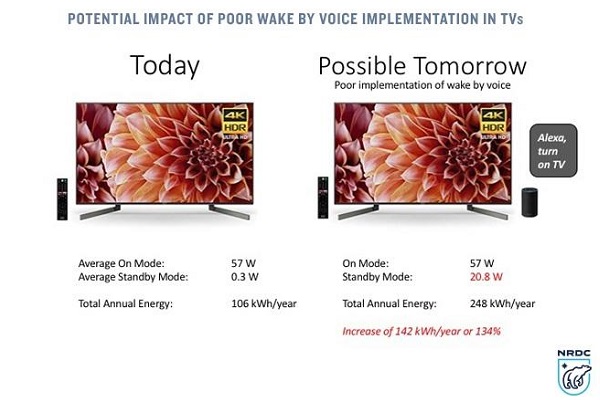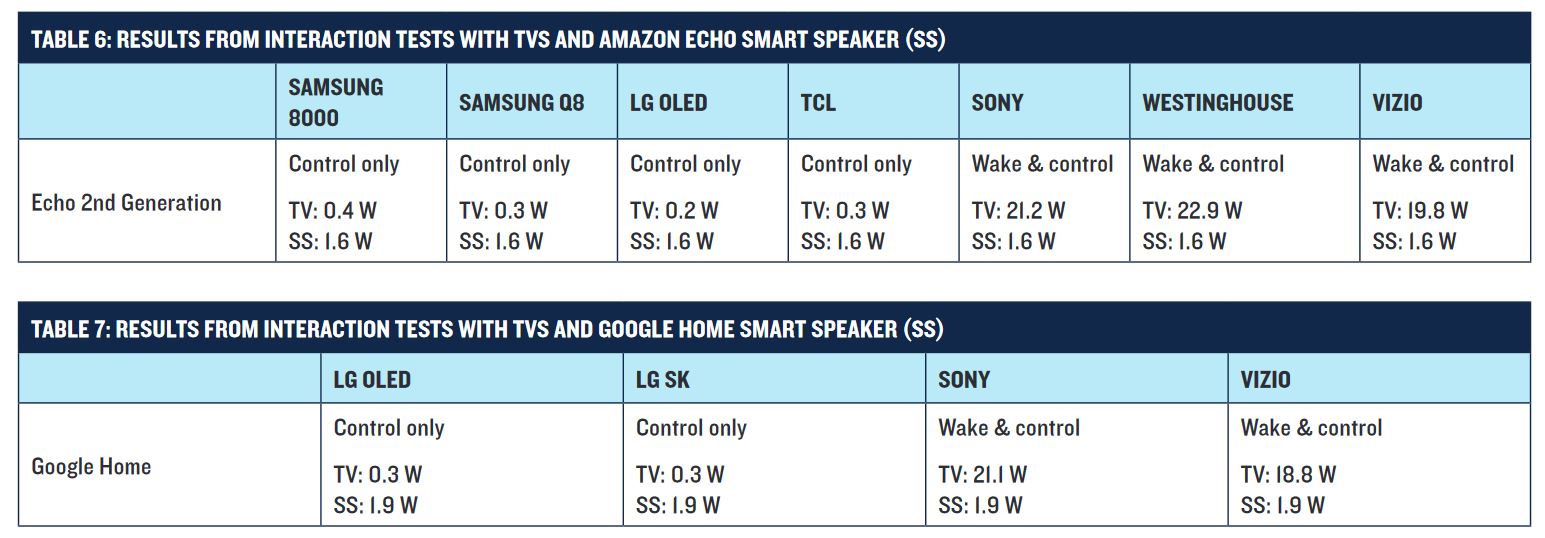Report: Smart Speaker Connections Double Smart TV Energy Consumption

Connecting a television to a smart speaker to control it by voice can double its energy use, according to a new report from the Natural Resources Defense Council (NRDC). The study, titled “Energy Impacts of Smart Speakers and Video Streaming Devices” found most of the devices are relatively energy efficient, except for the particular combination of smart speakers and smart TVs.
Energy Efficient Smart Speakers
The study tested a range of smart speakers, including the Amazon Echo-2nd Generation, Apple HomePod, Google Home, Google Home Mini, and the Cortana-powered Harman Kardon Invoke. The devices all used less than two watts in standby mode, except for the Invoke, which used 3.8 watts. The study found similar efficiency in streaming devices such as Roku, Google Chromecast, and Apple TV. Based on their equations, each device would only add between $1.50 and $4 to a household’s annual electricity costs.
Inefficient Television Connections
Connecting a smart speaker to a television to control it by voice, however, magnifies the energy consumption. Televisions in standby mode usually use less than a watt of energy, around 106 kilowatt hours or $12 a year. Syncing them up with a smart speaker increased the energy used to more than 20 watts an hour in some cases. That’s a total of 248 kilowatt hours a year and add around $30 a year in electricity costs. The extra energy only applies when the television is connected to voice control by smart speaker. It adds up if applied to the country as a whole.

“Our report should be a wake-up call for all TV manufacturers to improve their products to support hands-free operation without needlessly sucking massive amounts of energy as the next big energy vampires in our homes,” said Noah Horowitz, director of NRDC’s Center for Energy Efficiency Standards in a statement. “Up to $2.5 billion in extra electricity costs would be an appallingly high price for consumers and the environment to pay just to wake our TVs with a voice command.”
According to the CIA World Fact Book, the U.S. consumes 12,071 kWh per capita. At 2.55 residents on average per household, that would mean a growth of as much as 0.8% in household energy consumption. The NRDC actually reached out to television manufacturers to tell them about their findings, and the responses they received suggest the problem is already being addressed. Several of the TV makers said they were already working on lowering the energy required for syncing with smart speakers or had already rolled out software fixes.
Follow @voicebotai Follow @erichschwartz








